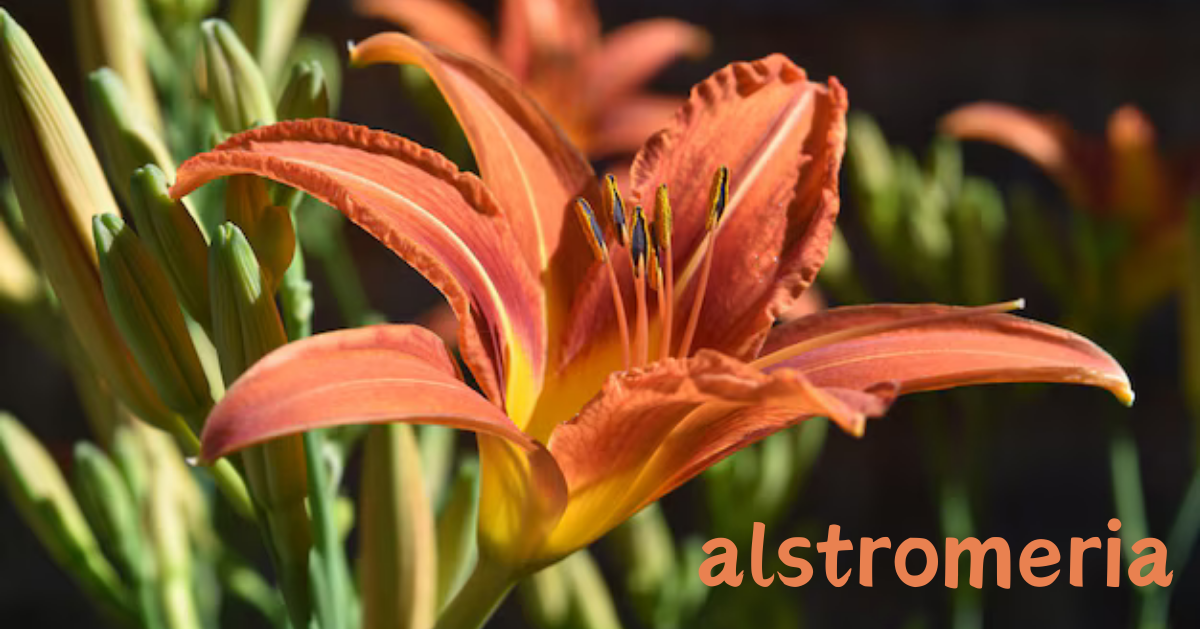Alstromeria, often referred to as the Peruvian Lily or Lily of the Incas, is a vibrant and exotic flower known for its striking appearance and rich symbolism. Originally native to South America, particularly Chile and Brazil, this stunning bloom has found its way into gardens and bouquets worldwide. But there’s more to Alstromeria than just its beauty. Let’s dive into its origins, care, and fascinating characteristics.
The Origin and History of Alstromeria
Alstromeria was named after the Swedish botanist Clas Alströmer, who first identified the flower in the 18th century. Its roots in South America tie it deeply to the lush landscapes of Peru, Chile, and Brazil. Traditionally, it symbolized friendship, devotion, and mutual support, making it a popular choice for gifts and decorations.
Unique Characteristics of Alstromeria
Alstromeria flowers are instantly recognizable for their trumpet-shaped blooms, vivid colors, and delicate streaks or speckles. Available in a rainbow of hues—ranging from fiery oranges to soft pastels—they often resemble miniature lilies. What sets them apart is their unusual growth habit: the flower petals twist as they grow, adding to their unique charm.
Why Alstromeria is a Gardener’s Favorite
This flower isn’t just about looks. Alstromeria is prized for its long-lasting blooms and adaptability. It thrives in a variety of climates, making it a favorite among amateur and professional gardeners alike. Plus, its relatively low-maintenance nature adds to its appeal.
Best Growing Conditions for Alstromeria
Soil Requirements: Alstromeria prefers well-draining soil rich in organic matter. A slightly acidic to neutral pH works best.
Sunlight: Full sun to partial shade ensures healthy growth and vibrant blooms.
Watering Needs: Consistent moisture is essential, but avoid waterlogging the soil.
Planting Alstromeria: Step-by-Step Guide
Choose a sunny location with partial shade during the hottest part of the day.
Prepare the soil by adding compost or organic matter for better drainage.
Plant bulbs 6 inches deep and about 12 inches apart.
Water thoroughly after planting and maintain even moisture.
Caring for Alstromeria Throughout the Seasons
Spring: As new shoots appear, apply a balanced fertilizer to encourage growth.
Summer: Deadhead spent flowers to promote continuous blooming.
Fall: Cut back foliage after the first frost and mulch to protect roots.
Winter: In colder climates, cover plants with straw or bring them indoors.
Common Pests and Diseases
Although hardy, Alstromeria can be affected by pests like aphids and spider mites. Regularly inspect the plant and use insecticidal soap if needed. Fungal diseases like botrytis can occur in overly moist conditions, so ensure proper spacing and ventilation.
Symbolism and Cultural Significance
Alstromeria carries profound meaning in many cultures. It symbolizes enduring friendship and the strength of bonds, making it a go-to for gifts celebrating relationships. Its vibrant colors are also associated with optimism, prosperity, and good fortune.
Using Alstromeria in Floral Arrangements
The versatility of Alstromeria makes it a favorite in floral design. These flowers add texture and color to arrangements, whether used as focal points or fillers. Thanks to their longevity—lasting up to two weeks in a vase—they’re ideal for weddings, anniversaries, and special occasions.
Propagating Alstromeria for More Blooms
Propagation is relatively simple through division. Carefully dig up mature plants, separate the rhizomes, and replant them in new locations. This not only multiplies your blooms but also rejuvenates the parent plant.
Why Alstromeria is a Florist’s Dream
Alstromeria’s durability and broad palette of colors make it a staple in the floral industry. Its ability to complement almost any flower makes it a reliable choice for mixed bouquets.
Medicinal and Ecological Benefits
While primarily ornamental, some cultures use Alstromeria for medicinal purposes, including treatments for inflammation and minor wounds. Ecologically, it attracts pollinators like bees and butterflies, contributing to biodiversity.
Popular Varieties of Alstromeria
‘Princess Lily’: Compact and perfect for containers.
‘Indian Summer’: Known for its golden-yellow blooms with red streaks.
‘Inca Ice’: Offers creamy petals with blush tones.
How to Keep Alstromria Fresh in Bouquets
To enjoy your cut Alstromria for longer:
Trim the stems at a 45-degree angle.
Remove any leaves below the waterline.
Replace the water every two days.
The Future of Alstromria in Horticulture
With ongoing hybridization, Alstromeia continues to evolve, offering gardeners and florists new varieties with improved resilience and colors.
Conclusion
Alstromeria isn’t just a flower; it’s a symbol of beauty, friendship, and resilience. Whether you’re planting it in your garden or using it in a bouquet, its charm is undeniable. Its ease of care and vibrant appeal make it a must-have for anyone who loves flowers.
FAQs
How long do Alstromria flowers last in a vase?
Alstroeria blooms can last up to two weeks with proper care.
Can Alstrmeria grow in pots?
Yes, they thrive in pots as long as they have good drainage and ample sunlight.
What does Alstrmeria symbolize?
It symbolizes friendship, devotion, and prosperity.
Is Alstromeria poisonous to pets?
While non-toxic to humans, it can cause mild irritation in pets if ingested.
When is the best time to plant Alstromeria?
Early spring or late summer is ideal for planting Alstromeria bulbs.










